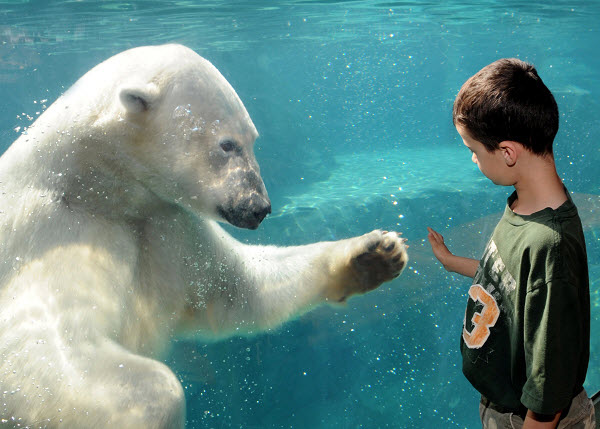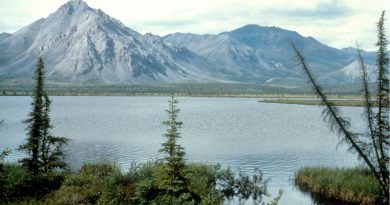Polar bear scientist: Why I care about Zoos
 I am chief scientist for Polar Bears International, the leading nonprofit dedicated to saving polar bears from extinction.
I am chief scientist for Polar Bears International, the leading nonprofit dedicated to saving polar bears from extinction.
For most of the preceding 30 years I was project leader for polar bear research in Alaska.
In mid-June, I had the honor of attending and making a few remarks at the Alaska Zoo’s “Feast for the Beasts” annual fundraising gala.
This was an important event, but while I was in Anchorage to work with the zoo, someone asked me why, given my long background with and devotion to wild polar bears, do I care about zoos?
History of conservation
The answer is simple: Zoos are an important part of saving polar bears in the wild. Zoos have a long history of leadership in wild animal conservation. In 2010 alone, U.S. zoos and aquariums spent $130 million on field conservation projects in over 100 countries. Dozens of species are healthier and more abundant in the wild today because of captive breeding and other zoo programs.
Some zoos have ongoing research programs aimed specifically at understanding particular aspects of polar bear life. Others are working on assisted reproductive techniques, like artificial insemination, which may be of value if we allow polar bear numbers to drastically decline. But the role of zoos in polar bear conservation goes far beyond their research and management efforts, and is even more important now than ever.
As my colleague Dr. Jeff Bonner, director of the famed St. Louis Zoo, is fond of saying “animals are safe in zoos, but they are not saved in zoos.” Wild animals are saved by conscientious efforts to preserve their habitat in the wild, and polar bears are the best current example of the need to preserve wild habitats.
My research has shown that, because polar bears depend on sea ice to catch their prey, preventing their extinction requires preserving their essential sea-ice habitats. A warmer world holds less sea ice. So, preserving polar bears is all about controlling temperature rise.
The laws of physics require that if atmospheric concentrations of CO2 and other greenhouse gases (GHGs) continue to rise, the world must continue to warm. Indeed, unabated global warming threatens all life on earth, including humans. Polar bears, however, will be among the first to go, because they depend on habitat that literally melts as the world warms.
Polar bears cannot be saved by setting aside a sanctuary or refuge. They can only be saved if humans appreciate them and are inspired to save their habitat by holding down global temperatures. That is where zoos come in.
The role of zoos
Approximately 170 million people visit North American zoos each year. This large and diverse audience places zoos in a special position to inform a broad segment of the public about the threats to polar bears and other wildlife and to inspire them to take actions necessary to preserve polar bears in the wild. The polar bears in zoos literally are ambassadors for their wild counterparts. Zoos also are organizational leaders in many communities, and have the opportunity through partnerships with other community groups to push for the changes we need to make. For these reasons, Polar Bears International is working diligently with zoos to assure they have the informational resources they need and to help with outreach efforts that will lead to community change.
I attended the “Feast for the Beasts” to help celebrate the roles the Alaska Zoo plays in polar bear conservation. For example, it long has partnered with the U.S. Fish and Wildlife Service and Alaska Clean Seas in order to help save orphaned and other “at risk” polar bears.
In addition the Alaska Zoo is now launching a sophisticated distance-learning program that will provide conservation education to remote villages across the state, and will expand the Alaska’s Zoo’s conservation impact far beyond those who visit the zoo each day. This program will complement PBI’s distance-learning programs and may be a model of outreach for other zoos to emulate. The new distance-learning program and other activities of the Alaska Zoo are but a few of the reasons I care about zoos.
Steven C. Amstrup is the chief scientist at Polar Bears International and the 2012 recipient of the prestigious Indianapolis Prize for his conservation efforts.
For more stories from Alaska Dispatch, click here



